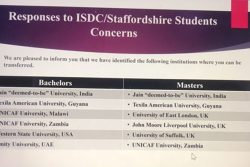Dear Editor,
In reference to Thomas B. Singh’s letter (June 11, 2024, Stabroek News), “The BoG policy seems to be a pursuit of exchange rate targeting as against inflation targeting or price stability”, I have a few observations. Let me note at the outset that it’s not the nominal/official exchange rate but the REER (real effective exchange rate) that really matters, and would go long way to clarify the issues that Mr. Singh raised. With this technicality out of the way, I note the following:
1. Is the Guyana exchange rate in equilibrium? Which exchange rate? If the question is whether the REER is ‘out of line’ with fundamentals, the data for 2000-2022 shows that movements in the REER were broadly stable. But ‘stability’ is not ‘equilibrium’? For example, a REER that favours exports but penalises imports, kept firmly stable by strict policies, is a disequilibrium rate and thus unsustainable.
2. Guyana is a de facto managed exchange rate system for practical reasons: the financial system is not ready for ‘floating”, whereas ‘fixed’ binds the hands of the BoG to fight recessions (e.g., due to external shocks) or inflation from overheating.
3. The point that “international competitiveness of our exports could have been achieved by appreciation” may not be farfetched. This goes back to my opening remarks about the REER. It’s possible that the appreciation, by lower costs of imports like intermediate and capital goods, make the REER more competitive. Examples include the strengthening yen (Japan) and the Deutsche Mark (Germany before 1990). These countries are heavily dependent on imports of industrial goods. Of course, higher productivity in Japan and Germany is a factor but that’s another subject.
4. Inflation targeting (IT) works through short-term interest rates and its transmission channels. But if the underground economy in Guyana is significant, that mechanism loses potency. The lack of a developed financial system further complicates IT. The practical difficulties facing the BoG are (a) determining a credible IT range and (b) sticking to it in the presence of fiscal dominance due to oil and government spending.
5. The “mind-boggling pace of capital works in the country will eventually taper off, leaving in its trail much idle, partially worn-out, low-technology equipment”. Excellent points; however, the gas-to-energy project might be an exception. Guyana badly needs affordable and reliable power. That said, the risk of resource curse is very high and the channels include Dutch disease, corruption, and bad decisions resulting in white elephants.
The challenges are great, there are no easy ‘fixes’, and in these uncertain times, much rests on good governance and strong economic management; self-assured hubris negates all. So, in general, I agree with Mr. Singh letter and let me add that Guyana needs more of this type of discussion for its own good.
Sincerely,
Terence M. Yhip
Published author








